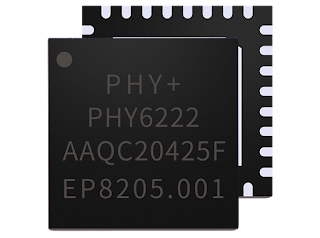LoRa USB Dongle USBLR110M Assembly and Trouble Shooting
Version
More pictures to be added for clear overview.Assembly
The USBLR110M is made up of three parts:
1. LoRa adapter board, aka main board;
2. MCU board, aka STM32F103C8 controller board;
3. SMA antenna;
Please take care the direction while you assembly the kit.
1. Please screw on SMA antenna onto the SMA socket, and make it face upside.
2. Let SWD pins of MCU board face upside, and plug it into DIP40 of main board.
3. You will find micro USB socket faces downside.
Trouble Shooting
The firmware pre-programmed into the MCU is called Ping-Pong RX/TX project. Each kit will try to PING the other peer, unless it receives Ping from the other peer. So, it is easy to setup a point to point test loop between any two kits.
Power up two kits with USB cable, any micro USB cable from your mobile phones are suitable for that purposes.
LED blinking
After power up, you will find three LEDs blinks.
| Name | Location | Function |
|---|---|---|
| LED1 | PWR/MCU | off: power off, on: powered on |
| LED2 | PC13/MCU | off: RX, on: TX |
| LED3 | SX1278 RFM | fast: error of RX_Timeout, slow: normal received |
If LED3 blinks fast, that means this kit cannot receive packet from remote. If it blinks in much slower frequency, which means it can receive and decode the packet (PING or PONG) well. Since there are two kits talking to each other, you will find the LED2 of these kits have opposite, one is on, the other is off, after one second, and they are toggled. If you turn one of them off, the LED3 of the other kit will blink fast.
If both kits are blink fast, please press the reset button of one of them, not both. You will find they will setup up quickly after about 1 second. If not, keep trying.
If LED Blinks Fast Anyway
If the problem persists, then you have to connect them to PC/Linux via any Terminal software, such as TeraTerm/Putty only if it can talks to local COM. The firmware pre-programmed will enumerate the device as CDC/ACM device, and it doesn't need any driver installation.
So, plug them into PC (Windows XP/7/8/10) or Linux (or Virtual Box inside Windows), open your terminal software, you can find its printed message. If Windows has some issue, I will like to recommend you to use Linux as last bullet.
Possible it will prompt you that SPI/D0 has some connection issue. That means you have to press both boards tighter.
Hardware Trouble Shooting in Hard Way
Although these boards have been tested onsite before delivery. It is possible to introduce more issues due to improper handling in delivery. They are rude, anyway. Then you have to trouble shoot the hardware on you own. Please follow the following steps.
1. Measure connections between modules and microcontrollers, from soldering pads to soldering pads. The key connections are SPI (MOSI/MISO/CS/SCK), RST, D0, 3V3 and GND.
2. Measure power supply (voltage) from 3V3 close to the SWD pins, both pads of diode (BL0520), and inductor after diode, they should be measured as 3.3V, 3.2V... By that means, we can make sure if SX1278/SX1276 is powered or not.
The last method of debug is using debugger, such as ST-LINK or JLINK, you can connect kit to debugger, open the Keil 5 project inside MDK5, download and start to debug, if the connection between MCU and SX1278 are failed, the code will drop into an endless loop before doing anything else.
And you can even probe the SPI bus activity with a low cost logic analyzer.


Comments